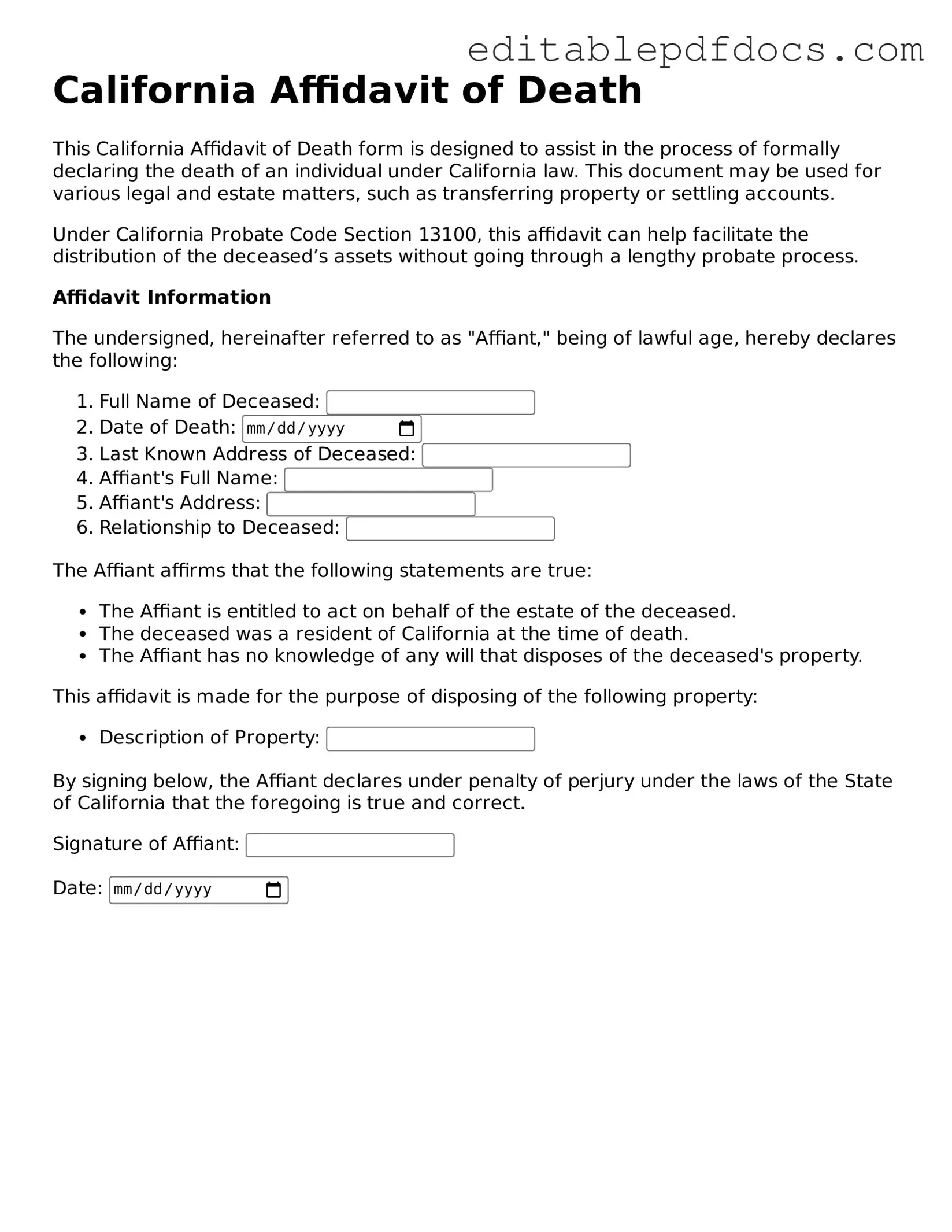Filling out the California Affidavit of Death form can be a straightforward process, but several common mistakes can lead to delays or complications. One frequent error is failing to provide accurate information about the deceased. It is essential to ensure that the name, date of birth, and date of death are entered correctly. Any discrepancies can cause issues when the affidavit is processed.
Another common mistake is neglecting to sign the affidavit. The form requires a signature from the person completing it, and without this, the document may be considered invalid. Additionally, forgetting to date the signature can also lead to complications, as the date of signing is critical for record-keeping purposes.
Some individuals may overlook the requirement for witnesses. The California Affidavit of Death form typically needs to be signed in the presence of one or two witnesses, depending on the specific circumstances. Failing to include the necessary witness signatures can result in the affidavit being rejected.
Inaccurate descriptions of the relationship to the deceased can also pose a problem. It is important to clearly state the relationship, whether it be spouse, child, or other family member. Misrepresenting this information can lead to challenges in the validity of the affidavit.
Another mistake involves not including all required documentation. Certain attachments, such as a certified copy of the death certificate, may be necessary to support the affidavit. Omitting these documents can delay the processing time significantly.
Some people might also misinterpret the instructions on the form. Each section must be read carefully to ensure that all information is provided as required. Misunderstanding any part of the form can lead to incomplete or inaccurate submissions.
Failing to keep a copy of the completed affidavit is a common oversight. It is advisable to retain a copy for personal records. This can be useful for future reference or in case any issues arise during processing.
Another mistake is not checking for typographical errors. Simple typos can create confusion and may require resubmission of the form. Taking the time to proofread can prevent unnecessary delays.
Lastly, not following up on the submission can lead to missed opportunities for correction. After submitting the affidavit, it is important to verify that it has been received and processed correctly. This proactive approach can help address any issues that may arise promptly.
